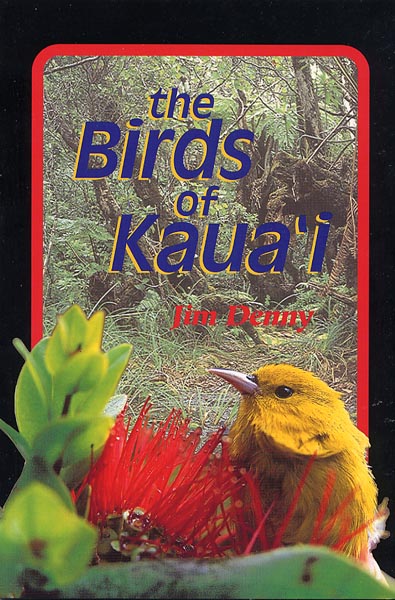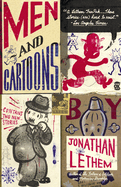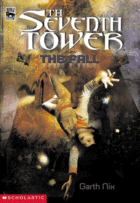Title: Charlie Bone and the Castle of Mirrors Jenny Nimmo
Publisher
Year: 2005
Genre: Children/Fantasy
Year: 2005
Genre: Children/Fantasy
410 pages
+ Better character development (for some characters), somewhat better plot construction
- Most characters are still flat, most adults are still ineffective, the overall story arc is unclear and meanders
In some ways this installment is an improvement over the previous three in this series. Nimmo actually seems to have anticipated aspects of the plot earlier in the series, and to be looking ahead to future volumes. However, it is still rather disappointing. Characters who are no longer needed for their one plot point simply disappear, objects of great attention in one book never reappear, and it is still the case that any new information about a character is quickly shown to be a vital plot point. Charlie Bone and the Invisible Boyended with an incipient visit to Sparkling Castle. However, the castle, Ollie, and Mr. Boldova are not even discussed in the present volume. Christopher Crowquill comes out of nowhere and, his utility outlived, he disappears from the action.
Inconsistencies and discontinuities abound. For example, we learn that the endowed can usually identify each other, but Cook has never been identified by the Bloors. A character whose endowment flowers in this volume is similarly not identified by the other endowed. We learn late in the book that a shapeshifter has the people he is impersonating held captive. There is some implication that this is not just to keep them out of the way, but to "borrow...the mind" of the person. Should we then suppose that Yolanda had a little blonde girl locked away somewhere earlier in the series? Charlie now speaks enough Welsh to command the wand, though we haven't seen him study the list Uncle Patton gave him. An evidently stupid endowed child puts on a cape, even knowing that various poisoned-clothes makers are about. There is much to-do about the child's rescue and how important it was to circumvent the staff of Bloor's; later, however, said child is recouperating in the Academy's infirmary, presumably vulnerable to the Bloors' influence, but no one cares about this. Why do the prisoner's captors sequester him at the castle? It seems pretty labor- and capital-intensive to do so. Please don't get me started on the question of why a few rottweilers would disrupt Pets' Cafe, but the presence of multiple other dogs, cats, gerbils, a giant blue snake, birds, rats, ducks, etc. does not.
Charlie and some of the other endowed children remain at Bloor's Academy to keep the balance. Other endowed seem not to have this compulsion, either as children or adults. I'm astounded that endowed parents who are aware of the ongoing struggle of good vs. evil would permit their children to attend Bloor's without adequate monitoring and safeguards; I am also astounded that they would not descend on Bloor's en masse to tip the balance to the side of good. Indeed, the endowed seem for the most part to be remarkably disorganized.
The characters' lack of curiosity troubles me. Asa used to dress up badly and follow people; he no longer does so, but no one wonders why. Charlie's wand turns into a moth, but no one seems to find this interesting or noteworthy. The adults remain generally inadequate; perhaps they are as unimaginative as the children.
Troublingly from a humanitarian perspective, Uncle Paton has received an inheritance, which he spends on gourmet food. Given our understanding that Amy Bone is under Grizelda's thumb because she lacks the economic resources to have her own house, Paton's behavior seems remarkably insensitive. In addition, there's something that rings a little racist to me in Lysander's repeated reference to his ancestors as "my African ancestors." If I were an endowed person from my own ethnic background, would it be necessary for me to refer again and again to invoking the spirits of "my Jewish ancestors"? "Don't worry, Charlie--I'll call upon the powers of my Jewish ancestors"? "Don't worry, Lysander--I'll call upon the powers of my WASP ancestors"?
Poor editing dogs this series. This volume again reprints the introductory page about the Red King and his Time Twister, which has no bearing on the events in this book. The family named de Grey was referred to in the publisher's promotional materials as "O'Gre." While O'Gre makes more sense than de Grey, it was apparently changed after promo materials went to booksellers and others, lending confusion to the enterprise. Finally, and I hope that this is not too much of a spoiler, the Castle of Mirrors has relatively little to do with the book, and is an inaccurate title for that reason.
Inconsistencies and discontinuities abound. For example, we learn that the endowed can usually identify each other, but Cook has never been identified by the Bloors. A character whose endowment flowers in this volume is similarly not identified by the other endowed. We learn late in the book that a shapeshifter has the people he is impersonating held captive. There is some implication that this is not just to keep them out of the way, but to "borrow...the mind" of the person. Should we then suppose that Yolanda had a little blonde girl locked away somewhere earlier in the series? Charlie now speaks enough Welsh to command the wand, though we haven't seen him study the list Uncle Patton gave him. An evidently stupid endowed child puts on a cape, even knowing that various poisoned-clothes makers are about. There is much to-do about the child's rescue and how important it was to circumvent the staff of Bloor's; later, however, said child is recouperating in the Academy's infirmary, presumably vulnerable to the Bloors' influence, but no one cares about this. Why do the prisoner's captors sequester him at the castle? It seems pretty labor- and capital-intensive to do so. Please don't get me started on the question of why a few rottweilers would disrupt Pets' Cafe, but the presence of multiple other dogs, cats, gerbils, a giant blue snake, birds, rats, ducks, etc. does not.
Charlie and some of the other endowed children remain at Bloor's Academy to keep the balance. Other endowed seem not to have this compulsion, either as children or adults. I'm astounded that endowed parents who are aware of the ongoing struggle of good vs. evil would permit their children to attend Bloor's without adequate monitoring and safeguards; I am also astounded that they would not descend on Bloor's en masse to tip the balance to the side of good. Indeed, the endowed seem for the most part to be remarkably disorganized.
The characters' lack of curiosity troubles me. Asa used to dress up badly and follow people; he no longer does so, but no one wonders why. Charlie's wand turns into a moth, but no one seems to find this interesting or noteworthy. The adults remain generally inadequate; perhaps they are as unimaginative as the children.
Troublingly from a humanitarian perspective, Uncle Paton has received an inheritance, which he spends on gourmet food. Given our understanding that Amy Bone is under Grizelda's thumb because she lacks the economic resources to have her own house, Paton's behavior seems remarkably insensitive. In addition, there's something that rings a little racist to me in Lysander's repeated reference to his ancestors as "my African ancestors." If I were an endowed person from my own ethnic background, would it be necessary for me to refer again and again to invoking the spirits of "my Jewish ancestors"? "Don't worry, Charlie--I'll call upon the powers of my Jewish ancestors"? "Don't worry, Lysander--I'll call upon the powers of my WASP ancestors"?
Poor editing dogs this series. This volume again reprints the introductory page about the Red King and his Time Twister, which has no bearing on the events in this book. The family named de Grey was referred to in the publisher's promotional materials as "O'Gre." While O'Gre makes more sense than de Grey, it was apparently changed after promo materials went to booksellers and others, lending confusion to the enterprise. Finally, and I hope that this is not too much of a spoiler, the Castle of Mirrors has relatively little to do with the book, and is an inaccurate title for that reason.










